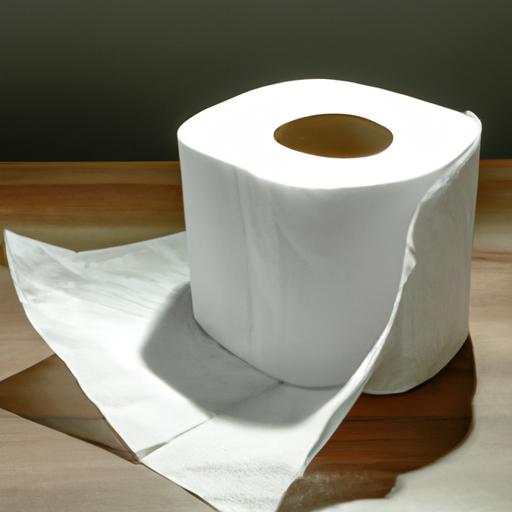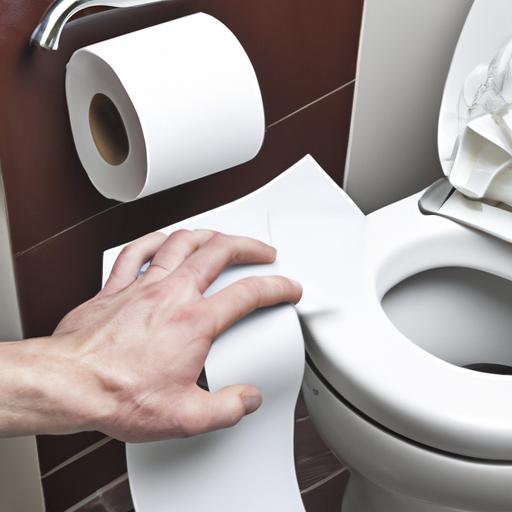What Was Used Before Toilet Paper?
Table of Contents
Toilet paper has become such an essential part of our lives that it’s hard to imagine what people used before its invention. But the truth is, for centuries, people around the world have been using various materials and methods to clean themselves after using the restroom. In this article, we’ll explore the history of toilet paper and the different alternatives people used before it became widely available.
Ancient Hygiene Practices

In ancient times, people did not have access to toilet paper or even the modern toilet. Instead, they used natural materials like water and their hands to clean themselves after using the bathroom. In some cultures, people used water alone, while in others, they used a combination of water and hands.
In ancient Rome, for instance, public toilets were equipped with a sponge on a stick called a “tersorium” that people used to clean themselves. The sponge was shared by all users, and after use, it was rinsed in a bucket of saltwater to be reused again. This practice was not only unsanitary but also contributed to the spread of diseases.
In other parts of the world, people used natural materials like leaves, grass, and moss to clean themselves. In some cases, people used smooth stones or shells to scrape off the waste. However, the use of these materials was not always effective, and it often led to infections and other health issues.
As people began to realize the importance of hygiene and sanitation, they started looking for better alternatives to natural materials. Cloth or fabric was one of the earliest materials used as an alternative to toilet paper. In medieval Europe, people used strips of cloth or wool that were washed and reused. This practice was prevalent among the wealthy, while the poor continued to use natural materials.
In the United States, corn cobs and husks were a popular alternative to toilet paper in the outhouses of rural areas. Farmers would save the cobs after harvesting corn and hang them on a string next to the outhouse. The cobs were rough and absorbent, which made them an effective cleaning material.
Another alternative was the use of a sponge on a stick, which was a common practice in ancient Rome. In the Middle Ages, people used a similar method but with a cloth tied to a stick. The cloth was dipped in a bucket of water or vinegar and used to clean the genital area after using the restroom. The cloth was then washed and reused.
Cultural Variations
As we have seen, the alternatives to toilet paper varied depending on the culture and the region. For instance, in Japan, people used a combination of water and bamboo to clean themselves. They would wipe themselves with a small bamboo stick called a “chugi” and then rinse with water.
In the Middle East, the left hand was used for cleaning after using the restroom, while the right hand was reserved for eating. This practice is still prevalent in some parts of the region, and it is considered disrespectful to use the left hand for anything else.
In India, people used water and the right hand for cleaning. They would use a bucket of water and a ladle to pour water over themselves, and then use the right hand to wash and clean. This practice is still prevalent in rural areas of India, although toilet paper is becoming more popular in urban areas.
Historical Alternatives to Toilet Paper
As people became more civilized, they started looking for more hygienic and comfortable alternatives to natural materials. Cloth or fabric was one of the earliest materials used as an alternative to toilet paper. In medieval Europe, people used strips of cloth or wool that were washed and reused. This practice was prevalent among the wealthy, while the poor continued to use natural materials.
During the American Civil War, soldiers used pages from newspapers, magazines, and catalogues as toilet paper. This was because paper was scarce and expensive, and soldiers had to improvise. This practice continued until the early 20th century when toilet paper became more widely available and affordable.
Another alternative was the use of a sponge on a stick, which was a common practice in ancient Rome. In the Middle Ages, people used a similar method but with a cloth tied to a stick. The cloth was dipped in a bucket of water or vinegar and used to clean the genital area after using the restroom. The cloth was then washed and reused.
Corn cobs and husks were a popular alternative to toilet paper in the outhouses of rural areas in the United States. Farmers would save the cobs after harvesting corn and hang them on a string next to the outhouse. The cobs were rough and absorbent, which made them an effective cleaning material.
Cultural Variations
Toilet practices varied across cultures and regions, and people used different materials and methods for cleaning themselves. In Japan, people used a combination of water and bamboo to clean themselves. They would wipe themselves with a small bamboo stick called a “chugi” and then rinse with water. This method is still prevalent in some rural areas of Japan.
In the Middle East, the left hand was used for cleaning after using the restroom, while the right hand was reserved for eating. This practice is still prevalent in some parts of the region, and it is considered disrespectful to use the left hand for anything else. Muslims are taught to use the left hand to clean themselves, and they often carry a small jug of water called a “lota” with them for this purpose.
In India, people used water and the right hand for cleaning. They would use a bucket of water and a ladle to pour water over themselves, and then use the right hand to wash and clean. This practice is still prevalent in rural areas of India, although toilet paper is becoming more popular in urban areas. In some parts of India, people use a small sprayer called a “health faucet” to clean themselves. This sprayer is attached to the toilet and is used to spray water over the genital area.
Evolution of Toilet Paper
The first commercially available toilet paper was introduced in the United States in 1857 by Joseph Gayetty. The paper was sold in packages of flat sheets, and each sheet measured 22 inches by 16 inches. It was made of hemp and infused with aloe to soothe the skin. However, the product was not very successful, and it took several decades before toilet paper became widely used.
Early toilet paper manufacturing techniques involved cutting the paper into individual sheets, which were then folded and packaged. In the early 1900s, companies began producing toilet paper on a roll, which made it more convenient for consumers to use. The rolls were perforated, making it easy to tear off individual sheets.
Today, modern toilet paper is made from wood pulp or recycled paper. It comes in various sizes, textures, and thicknesses, and it is often infused with fragrances or lotions to provide extra comfort. Some brands also offer environmentally friendly options, such as recycled or bamboo toilet paper.
Conclusion
In conclusion, the history of toilet paper is a fascinating one that highlights the importance of hygiene and sanitation. Before the invention of modern toilet paper, people used various materials and methods to clean themselves after using the restroom. These practices varied depending on the culture and the region, and some were more effective than others.
The evolution of toilet paper has come a long way since its inception in the 19th century. Today, toilet paper is an essential item that we take for granted. However, it’s important to remember the historical practices that led to its invention and appreciate the modern conveniences that we enjoy today.
By understanding the history of toilet paper, we can gain a better appreciation for the advancements in hygiene and sanitation that have improved our quality of life. So, the next time you use toilet paper, take a moment to reflect on its history and the importance of good hygiene practices.

